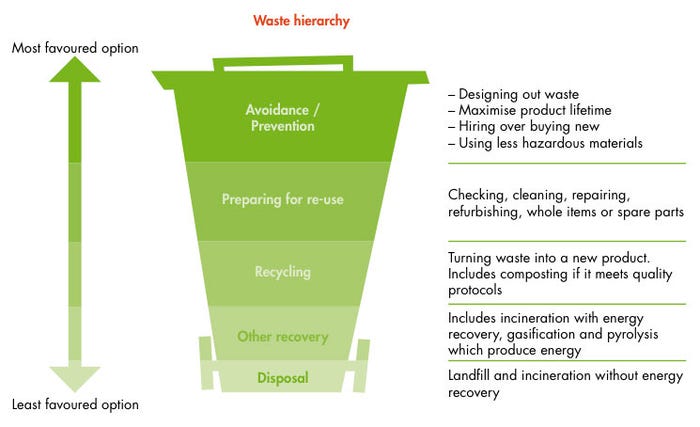Winning the bid for the 2012 Olympics was just the start. In 2007, Tony Blair, then prime minister of the UK declared that the London 2012 Games could become a "cutting edge example of sustainability". A recently published report compiled by BioRegional and WWF-UK concluded that, in fact, the city has actually done quite well: "London 2012 is the Olympics that sets a new sustainability standard for future Games".
July 31, 2012
Winning the bid for the 2012 Olympics was just the start. In 2007, Tony Blair, then prime minister of the UK declared that the London 2012 Games could become a "cutting edge example of sustainability". A recently published report compiled by BioRegional and WWF-UK concluded that, in fact, the city has actually done quite well: "London 2012 is the Olympics that sets a new sustainability standard for future Games".
Obviously, there were also a few disappointments, including the "failure to meet the renewable energy targets set out in the bid", but in general, the reviews have been cautiously optimistic. The report lauded, for example "the use of carbon footprinting and carbon management across decision making", which it called "a decisive step with the potential to become a standard for all major projects." Also, the use of temporary structures, lightweight venues, sustainable materials and 'legacy-proof' design was favorably hailed, as was the fact that, for the first time "food had been included in the sustainability strategy of any Games".
WRAP's London 2012 Waste Hierarchy |
A "Waste Hierarchy" diagram from the London Organizing Committee of the Olympic Games and Paralympic Games (LOCOG) published in its "Zero Waste Games Vision." |
A huge challenge confronting the London Olympic and Paralympic Games organizing committee (LOCOG) was, and is, the problem of waste. There will be 14,700 athletes competing, over 10 million spectators pouring into the city and the other Olympic venues, plus another 21,000 journalists and around 200,000 staff.
Moreover, like the event industry, the construction industry - and any city hosting the Olympics becomes a messy construction site in the years leading up to the Games - is also known for generating mountains of waste. And yet, as the report points out "London 2012 chose to target the highest levels of resource efficiency and waste management....[and] all the core targets are either achieved or on track."
During the demolition and building stage, this meant achieving reuse or recycling targets of greater than 90% for demolition activities, and reuse, recycling or recovery targets exceeding 90% in the building phase. During the Games themselves, a 70% (by weight) reuse, recycling and composting target applies to operational waste.
Even more ambitious, however, is the target of zero waste directly to landfill ('direct' allows for the indirect waste which will emerge from material left over after an energy from waste process has taken place), which aims to ensure that, once the London Olympics are over, they will leave "an important legacy for environmental sustainability for UK infrastructure as a whole, in terms both of know-how and best practices."
In terms of waste, best practices at the London Games themselves exhibit integrated thinking that involves suppliers, commercial partners and the public, such as consumer messaging: in collaboration with Coca-Cola, a company with "considerable recycling on the go experience" a London 2012 Zero Waste Events Protocol has been developed.
Coca-Cola used its marketing knowledge to create an engaging consumer-facing campaign on site with clearly marked bins and messaging. Supplier collaboration is another example: working together with Heineken, a new recyclable plastic bottle, the first of its kind, was developed, which can be disposed of in the recycling bins available at London 2012. In total there will be 4000 containers for recycling, composting and residual waste across Olympic venues.
The organizing committee LOCOG has also declared that all packaging products, where not readily recyclable (such as PET), that are used for food, must be certified in accordance with European standard EN 13432 (the agreed European Standard for compostability). LOCOG has also put regulations in place requiring that PET containers be kept separate for subsequent recycling and that the candy, snack and other wrappers be collected separately to be sent to energy-from-waste facilities.
Plant-based packaging is set to play a major role at London 2012. The organizing committee has been working closely with among others, the Waste and Resources Action Programme (WRAP) to establish guidelines for the management of waste collection, recycling and composting flows, thus helping catering services to choose the most suitable materials for their packaging. And the voluntary agreement on food and packaging waste - the "Hospitality and Food Service Agreement" - presented in June by WRAP, aims to support companies, authorities, communities and individuals to reduce the amount of food and packaging waste produced, by developing sustainable products and making more efficient use of the available resources.
Furthermore, in order to ensure integrity in the supply chain, LOCOG has appointed a single supplier - London Bio Packaging - for all non-sponsor food related packaging. Mater-Bi - the family of biodegradable and compostable bioplastics produced by Novamont - has been chosen by London Bio Packaging and two key sponsors as one of the reference materials for food packaging and catering services. Cutlery, straws, cups and lids at the London Olympic Games will be made of Mater-Bi by two of Novamont's main processing partners - Ecozema and SEDA.
Even the only branded food outlet at the Games venues, McDonald's, who will be running their world's largest restaurant at the Olympic park, will be providing their customers with cups, cutlery, straws, lids and containers which have all been strictly certified in accordance with standard EN13432 and made of Mater-Bi.
By providing visitors, athletes, officials and staff with the correct tools, London 2012 aims to become the biggest zero waste event in history. The next 16 days will show just how well the city has succeeded in this goal.
About the Author(s)
You May Also Like



